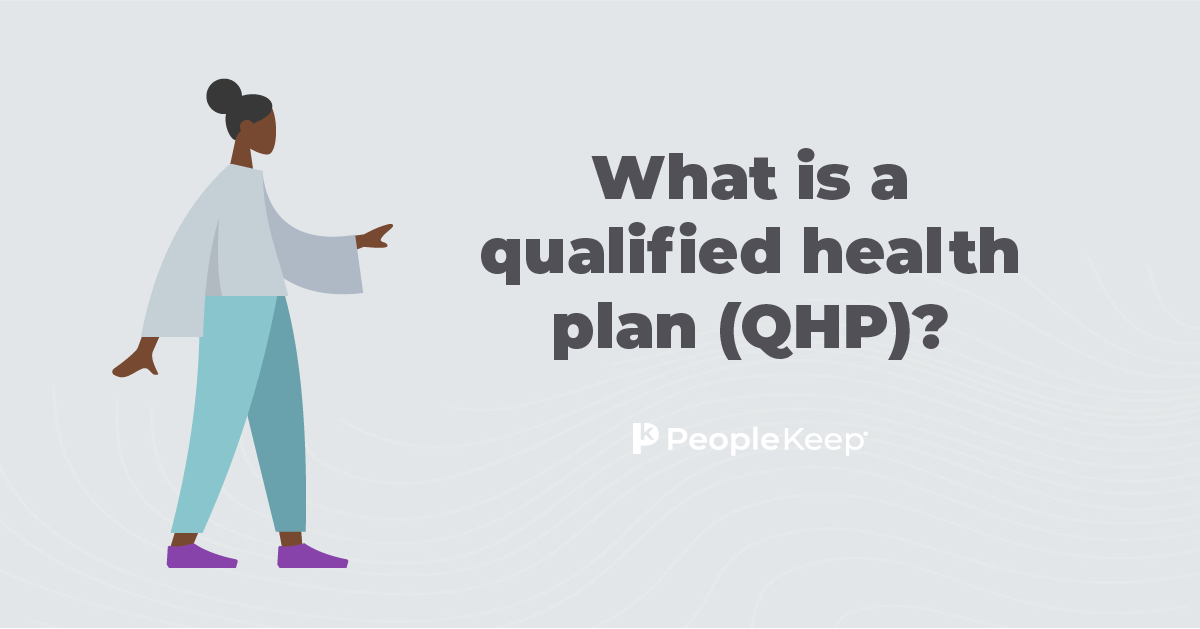What are the metallic tiers of health insurance coverage?
By Holly Bengfort on November 18, 2025 at 8:00 AM
One goal of the Affordable Care Act (ACA) in the United States is to improve access to affordable health insurance plans for individuals without employer-sponsored coverage. The state and federal Health Insurance Marketplaces categorize plans into standard levels. This helps individuals find the right insurance policy more easily.
If you're ready to purchase individual health insurance, your first step is understanding the different metal levels of plans. All marketplace plans cover the ten essential health benefits, such as preventive services and mental health services. But each has different ratios of what you'll pay and what your health insurer will pay for medical costs.
In this article, we'll explain the metal tiers of health insurance and how subsidies offer financial help.
In this blog post, you'll learn:
- What actuarial value is and why it matters.
- The relationship between metal tiers and premiums.
- How to pick which metallic level is best for your situation.
What are the metal tiers in health insurance?
The federal government groups marketplace plans into four coverage levels. They're referred to as health coverage tiers, metallic tiers, or metallic levels.
The metallic tiers only affect how you and your health insurance provider divide healthcare costs. They don't influence the quality of care you receive or the provider network availability.
When you look at a health insurance plan option, you'll notice that your total medical expenses include common health insurance terms like premiums, deductibles, and out-of-pocket costs, such as copayments and coinsurance amounts.
A more expensive metal tier (generally a plan with a higher premium) means the health insurer pays a higher share of your medical expenses. A less expensive tier (usually a plan with a lower premium) means that you incur higher out-of-pocket medical costs. Again, these categories have nothing to do with the quality of care you receive.
The four metallic levels, from lowest to highest premium cost, are:
- Bronze
- Silver
- Gold
- Platinum
Within each metallic tier are various plan types, such as health maintenance organization (HMO) or preferred provider organization (PPO) plans. The type of plan determines where you can get comprehensive care and what you pay to receive medical services and medications.
What is the relationship between metal tiers and health insurance premiums?
As you may already know, individual health insurance premiums and deductibles vary based on:
- Where you live
- Your insurance carrier
- Your plan's metal tier
Generally, plans with higher premiums have lower annual deductibles.
The average premium costs for plans relate to the amount of health insurance coverage they provide. Higher-tier plans, like gold or platinum, mean you'll pay higher monthly premiums. In lower levels of plans, like bronze or silver, you may pay less in premiums but pay a larger deductible.
Here are the projected average monthly premiums for each metal tier in 20261:
- Average-lowest cost bronze premium: $456
- Average-lowest cost silver premium: $611
- Average-lowest cost gold premium: $615
Remember, no matter which plan you select, all marketplace health plans are qualified health plans. That means they must offer a set of preventive care services with no copayments.
What is actuarial value?
Actuarial value is the percentage of costs a health plan covers in relation to how much the individual policyholder pays. You calculate actuarial value by the total expected payments for essential coverage divided by the total expected costs of the “standard population” for essential benefits.
Average actuarial values determine the cost-sharing baseline between you and your health insurance carrier. Because actuarial value is based on a standard population, the cost-sharing structure could vary from one plan to another, so your actual costs may differ.
For example, a plan with a higher deductible may have a lower coinsurance to offset it to reach the plan's desired actuarial value. Another plan may compensate for a high deductible by covering a few services completely before the policyholder meets the plan's deductible.
The goal of the actuarial value structure is to keep all participants of the same metal level plan paying the same cost of care. However, the payment out-of-pocket costs will vary by plan and the medical services you may need, so it's important to read each plan's summary of benefits to understand its structure before enrolling.
What's the difference between each metal tier?
We'll go over each tiered plan in more detail below to help you understand how they work.
Bronze plans
The bronze health insurance plan has an average actuarial value of 60%. This means covered individuals typically pay 40% of their expected medical expenses. The bronze metal tier plans usually have the lowest monthly costs, so they can be very appealing if you're looking for the cheapest plan option. But bronze plans also have the highest annual deductibles.
These lower-tier plans can come with financial risk. You could be stuck paying high costs when you need healthcare, such as paying several thousand dollars as an out-of-pocket maximum before your health insurance company starts chipping in.
However, there is a perk of on-exchange bronze plans starting in 2026: they may be health savings account (HSA)-qualified. The One Big Beautiful Bill Act (OBBBA) has now made most catastrophic and bronze plans HSA-qualified.
A bronze plan may be right for you if:
- You're looking for a lower monthly payment
- You only have a few expected medical needs
- You want to contribute to a health savings account (HSA)
However, you could face a steep bill if you suddenly need major medical care.
Silver plans
The silver plan has an average actuarial value of 70%. Covered individuals pay 30% of their expected medical expenses. Marketplace enrollees prefer silver-tier plans because they usually have moderate monthly health insurance premiums and out-of-pocket expenses when you need care. With a silver plan, your annual deductible will be lower than a bronze plan.
A significant feature of silver-tier plans is that they come with potential cost-sharing reductions based on your household income level and family size. Cost-sharing reduction subsidies only apply to silver-level plans. Meeting the requirements may provide you with additional savings each year when using different healthcare services.
If you qualify for a cost-sharing reduction, available to people with a household income up to 250% of the federal poverty level, you can reduce your out-of-pocket costs. There are also advance premium tax credits for people who earn between 100% and 400% of the federal poverty level. These types of tax subsidies reduce your premium costs.
In 2026, some silver plans may be more expensive than gold plans. This is due to silver loading in some states.
A silver plan may be right for you if:
- You use healthcare services moderately
- You qualify for cost-sharing reductions
You may pay a higher monthly premium than a bronze plan, even with subsidies, but you'll receive more comprehensive coverage in return.
Gold plans
The gold plan has an average actuarial value of 80%. Covered individuals only pay 20% of their expected medical expenses. Gold plans have high monthly premiums but lower out-of-pocket costs because they typically have very low deductibles. This means you'll start seeing extra savings sooner if you access a lot of healthcare in a given year.
A gold plan may be best for you if:
- You can afford the monthly premium
- You want lower costs for services rather than unpredictable out-of-pocket expenses
- You have a chronic condition
- You expect to need a lot of care during the year
Platinum plans
The platinum metal plan has an average actuarial value of 90%. Covered individuals pay only 10% of their expected medical expenses. It has the highest monthly premiums and the lowest annual deductibles of all the tiers. This means extra savings will happen quicker if you need a lot of medical care.
A platinum plan may be best for you if:
- You use a lot of healthcare services
- You have a serious medical condition
- You can afford the high monthly premium
But because platinum plans are expensive and not available in every county, KFF found that only 1%2 of total marketplace enrollees opted for a platinum plan in 2025.
What are catastrophic health insurance plans?
Catastrophic health insurance plans are your cheapest choice for health coverage. They fall below the bronze tier. They have low monthly premiums but high deductibles. These plans offer qualified individuals health insurance coverage in the event of an emergency or serious injury.
Like the metal tier plans, catastrophic plans must cover certain preventive health services at no charge. These plans also provide covered benefits of three primary care doctor visits a year before you meet your deductible. After that, the plan will pay 100% for in-network essential coverage for the rest of the year. According to the KFF, the annual deductible3 for catastrophic coverage in 2026 is $10,600 for individual coverage and $21,200 for family coverage.
To purchase a catastrophic health plan, you must meet specific criteria. They are for people younger than 30 or those who have a hardship exemption citing special circumstances. These circumstances include homelessness, facing eviction or foreclosure, facing significant medical debt, or having filed for bankruptcy.
Does your employer offer you an HRA?
If your employer offers an individual coverage health reimbursement arrangement (ICHRA) or a qualified small employer health reimbursement arrangement (QSEHRA), they can reimburse you for your individual health insurance premiums.
Health reimbursement arrangements (HRAs) are growing in popularity among employers. Instead of offering a traditional group health insurance plan, they provide employees with an allowance to spend on individual health insurance coverage.
With an HRA, your employer can also reimburse you for other medical expenses, such as:
- Primary care visits
- Emergency care
- Prescription drugs
- Over-the-counter medication
Conclusion
Choosing the appropriate metal tier primarily depends on two factors: your health and your budget. If you require significant medical care or medications, one of the higher-tier plans is an excellent choice if the premium is within your budget. If you're generally a healthy individual and don't need a lot of healthcare, you can pay less with a silver plan or a bronze tier plan.
There are tools on the marketplace to compare plan options to help you determine which is best for you. By using premium tax credits and cost-sharing subsidies, you may even be able to secure a cheaper monthly premium. At the end of the day, ensuring you have health insurance is crucial to managing unexpected medical bills if you have an accident or become ill.
This article was originally published on August 29, 2013. It was last updated on November 18, 2025.
Check out more resources
See these related articles

What is a qualified health plan (QHP)?
Learn the ins and outs of qualified health plans (QHPs), including how they’re categorized and how you can enroll in one.

What is actuarial value?
Learn what actuarial value is and how it measures the percentage of healthcare costs a plan covers. Understand its role in health insurance choices.

What is a catastrophic health insurance plan?
Curious about catastrophic health insurance? Find out how these plans work and if they're the right fit for your healthcare needs in this helpful article.


